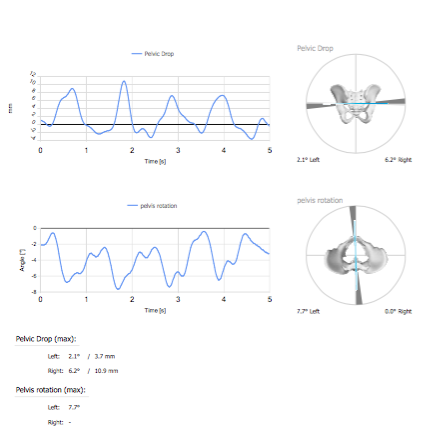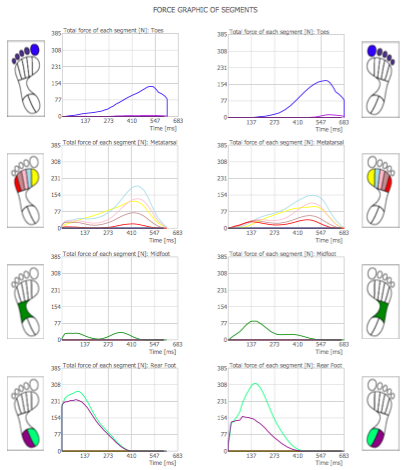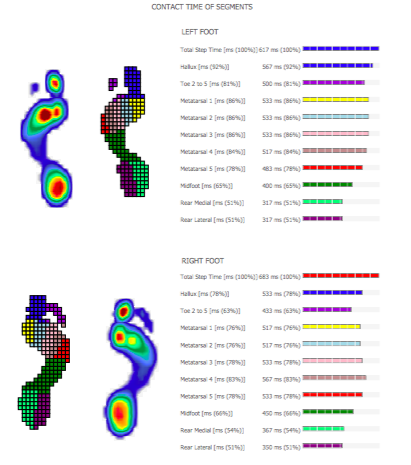THERAPY SERVICES
- domscott5
- Mar 6, 2022
- 3 min read
It looks impressive – stylishly minimalist. Behind the simple, elegant lines lies The Way Forward. Motion or gait analysis catches up with the innovation and creativity of the like of Apple et al. You’re looking at the UK’s very first full 4D motion® Lab Gait Analysis System by DIERS International.
How active you are, or aren’t, isn’t relevant. Your age bears no relevance either. Consider only whether your body is at ease with itself. Do you think you’re able to move your body well, efficiently, effectively, smoothly? Is being ‘still’ comfortable?
Is movement fluid and effortless?
From time to time injuries occur. But we don’t need to panic and race for help because our body’s default mode is to repair itself on a moment-to-moment basis. It’s especially busy doing just that when you’re asleep! So when healing stalls, or when injuries simply don’t go, the question to ask is “What’s In The Way Of Your Body Doing Its Normal Job?”
Persistent or regular lower back/mid back/upper back/neck pain
Persistent or regular shoulder/elbow/wrist pain
Persistent or regular hip/knee/ankle/foot pain
And even a rotation of pain sites, where you seem to recover from one injury only to have pain elsewhere, especially when there doesn’t seem to be a clear reason for its onset.
These descriptions seem so commonplace that, to a degree, one could be forgiven for stating that there is an acceptance of their inevitability. ‘Wear and tear’ is mentioned frequently, as if it’s normal. But perhaps there will be less of this tolerance in the future with the arrival of this new state-of-the-art technology giving us real insight into why the healing button has got stuck on ‘pause’.
All you need to do is be able to walk on the treadmill for 6-30 seconds and let the cutting edge technology spell out the problem.
THE GEEKY STUFF …
Using video-rasterstereography with no more radiation than that of a light bulb, triangulation and reconstructed 3-dimensional photogrammetry and image processing (ie very clever stuff and a bit like a model produced by a 3D printer) a reconstruction of the surface of your back is created to the accuracy of 0.2mm. The surface topography can then be correlated to the skeletal system below through the mathematics of differential geometry to an accuracy of 1mm (manual palpations lead to a mean error of about 5mm). By making as many measurements as possible automatic (avoiding the errors inherent in manual marker positioning), and with 300 frames every 5 seconds being recorded (corresponding to a frequency of 60Hz) the rotation of the vertebra can be shown to a mean error of 3 degrees, the lateral deviation to within 4mm (both parameters equal to the measurement error of X-rays) and pelvic obliquity (or tilt) and torsion are measured to an accuracy of less than 1mm. Add to that a medical-grade treadmill incorporating a pressure-sensitive measuring plate and more clever analytical software …
… WHICH RESULTS IN …
Probably quicker and easier to list what information it doesn’t offer. As a taster, here are just a VERY few of the possible reports offering ‘eyes in’:
How you’re managing your centre of mass as you move
How much of each foot you’re able to use and over what time period in the gait cycle
How much time each part of your foot spends in contact with the ground, and with what force, and at what moment of the gait cycle
How your pelvis tilts and rotates as you move
The alignment of your spine from side view and back view, plus its rotations as you move, synchronised with the activity of your pelvis
This is incredible information enabling targeting of the problem rather than treating of the symptoms. It may be that you take the information to your own practitioner for their use, or you spend time in clinic with me, working through possible solutions.
The beautiful part being that either later that session, or on a return visit, you get to compare ‘before and after’ scans to see what is working and what isn’t. Knowledge is King.
It’s endlessly exciting. Now we get to objectively measure that which we previously subjectively analysed through eyes on the surface and feel. We add this to our knowledge and experience base. This brings injury-recovery into a whole new world of potential.
The human body should be a self-healing, self-massaging, staggeringly efficient biomechanical machine; when it isn’t, you can take action.














Comments